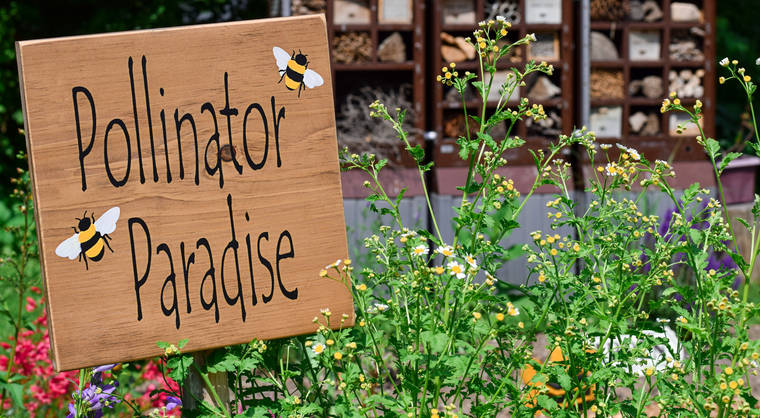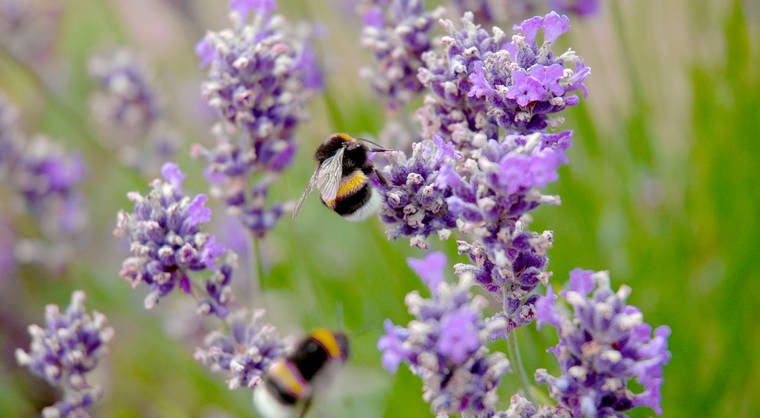Bees and Flowers: A Friendly Planting Guide
June 23, 2025

Bee-Friendly Gardening: What to Plant This Summer
Nothing says summer like the low, contented hum of bees drifting from blossom to blossom. These tiny pollinators power a third of the food we eat, yet their populations are under stress from habitat loss, pesticides, and climate change.The good news? You can turn even the smallest balcony box or backyard bed into a buzzing oasis—one that delights the eye and nourishes local bee colonies at the same time. Grab your gardening gloves, because we’re about to map out the best blooms and herbs to plant right now for a bee-friendly summer.
Why Bees Matter (and Why Your Garden Matters to Them)
Bees aren’t just cute garden guests; they’re ecological MVPs. When a bee lands on a flower looking for nectar, grains of pollen hitch a ride on its fuzzy body.As the bee moves to the next bloom, that pollen transfers, fertilizing the plant so it can form seeds or fruit. Tomatoes, cucumbers, melons, berries—many of your warm-weather kitchen staples need bee visits to thrive. A single well-planned garden bed can support hundreds of foraging trips per day, especially during midsummer when natural wildflower sources start to dwindle.
The Golden Rules of Bee Plant Selection
Choose native or well-adapted species.Local bees evolved alongside local flora, so native plants often supply perfectly timed blooms and the right nutritional makeup.
Aim for continuous color.
Bees need food from spring through fall. Plant early, mid, and late-season flowers so something is always in bloom.
Vary flower shapes and heights.
Different bee species have different tongue lengths. Diverse plant architecture welcomes everyone from bumblebees to tiny sweat bees.
Skip pesticides.
Even “bee-safe” sprays can disorient or weaken pollinators. If pests strike, try handpicking or a blast of soapy water instead.
Top Summer Annuals Bees Can’t Resist
SunflowersTowering, cheerful, and practically a bee magnet. Opt for open-faced varieties like ‘Lemon Queen’ rather than dense, double-petaled hybrids.
Cosmos
These airy, daisy-like flowers bloom nonstop if you keep them deadheaded. The pastel pinks and whites are pretty, but orange varieties such as ‘Cosmic Orange’ stand out to bees.
Zinnias
Fast-growing and neon-bright, zinnias fill gaps in a border and lure pollinators all the way to frost. Single or semi-double blooms provide the easiest pollen access.
Tithonia
Think of it as the sunflower’s fiery cousin. Vibrant orange petals and abundant nectar draw bees plus butterflies and even the occasional hummingbird.
Calendula
Also known as pot marigold, calendula offers edible petals and medicinal uses for you, while giving bees a steady buffet of pollen through the hottest months.
Perennial Powerhouses for Long-Term Buzz
Purple ConeflowerIconic pinkish-purple petals and a raised central cone make this a mid-summer favorite. It shrugs off drought and keeps blooming when annuals fade.
Bee Balm
With a name like that, you know it earns its stripes. Tubular, shaggy flowers release a minty scent and provide nectar for bees and hummingbirds alike.
Black-Eyed Susan
Golden petals and a dark brown center create a classic prairie look. Rudbeckias naturalize easily, forming sunny drifts that bees patrol daily.
Russian Sage
Tall, silvery stems topped with purple flower wands offer both fragrance and extended bloom time. Its open spikes let bees feed from multiple blossoms in seconds.
Yarrow
Flat, umbrella-shaped clusters act like landing pads for pollinators. Choose yellow, white, or the popular terra-cotta shades—bees love them all.

Herb Garden Heroes: Double Duty for Kitchen and Hive
BasilLet a few plants bolt and bloom into tiny white or purple flowers. Your pesto production might slow, but neighborhood bees will thank you.
Lavender
Those fragrant spikes of purple are bee nirvana. Plant it in well-drained soil and watch as both bumblebees and honeybees jostle for a taste.
Thyme
Low-growing thyme fills gaps between stepping stones and erupts in pink blossoms that thrumming bees adore. Bonus: you get aromatic sprigs for marinades.
Oregano
Left to flower, oregano produces lacy clusters of pale blooms buzzing with life. Harvest half, let half bloom, and everyone—cook and bee—wins.
Borage
Star-shaped blue flowers replenish nectar every few minutes, making borage a high-traffic stop. Its cucumber-like leaves are edible, and the plant self-seeds for future summers.
Simple Design Tips for a Pollinator Paradise
Cluster similar plants together instead of scattering single specimens; bees locate food more efficiently in dense patches.Provide shallow water—like a birdbath lined with pebbles—so bees can sip without drowning. Leave a bit of bare soil or a small brush pile for ground-nesting native bees.
Finally, embrace a little imperfection: an untidy corner with dandelions or clover can be a lifesaver when ornamental beds are between blooms.
Beyond Bees: Bonus Pollinator Guests
Planting for bees inadvertently invites butterflies, hoverflies, and hummingbirds. Milkweed tucked among your coneflowers may attract monarchs, while red salvia spikes lure ruby-throated hummingbirds. A biodiverse garden hums—literally—with layered life that benefits the broader ecosystem.The Final Buzz
Supporting bees isn’t rocket science; it’s as simple as swapping a flat of generic bedding plants for pollen-rich blooms and herbs.By choosing a spectrum of colors, shapes, and bloom times—and by giving chemicals the boot—you transform your summer garden into a refuge where pollinators can feast, breed, and thrive.
In return, they’ll boost your veggie yields, keep fruit trees productive, and add that signature summer soundtrack of soft, contented buzzing. Plant wisely, and you’ll harvest not just beauty, but the sweet satisfaction of helping the planet—one blossom at a time.